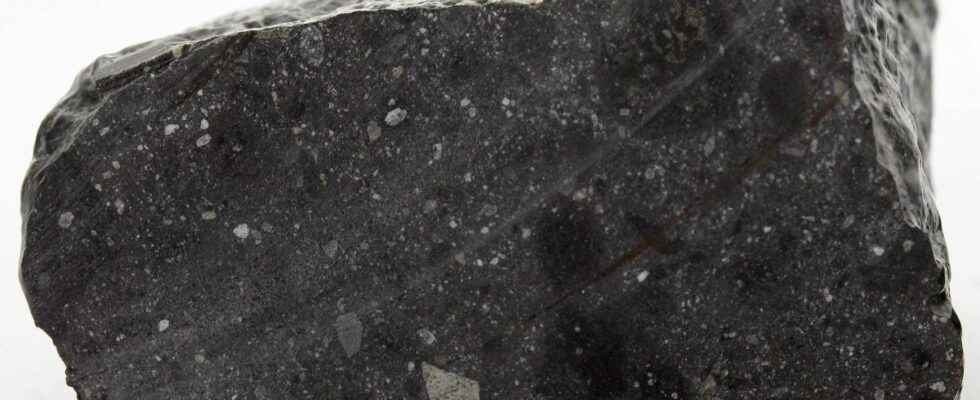In 2011, Mysterious fragments from an unknown rock that crashed to Earth billions of years ago were discovered in the Western Sahara Desert, Morocco. Today, researchers have just unveiled the story of its creation.
It contains tiny fragments almost 4.5 billion years old. Nicknamed ” black-beauty “, this dark-looking rock was first found in 2011 in the desert of the Sahara, in Morocco. About ten additional samples were then taken, which come from the same source rock. Since then, scientists have established the origin of this mysterious rock: it comes from our neighboring planet, Mars. But the story that brought it to us was missing until today: an international collaboration of researchers has managed to reconstruct it, in a study published in the journal type communications.
Nearly 90 million craters identified
From its real name NWA 7034, Black Beauty is made up of martian rocks very old, 4.5 billion years old. It was thus formed during the very beginnings of the Solar System, when the earth’s crusts and Martians weren’t finished yet. It remains to be seen where exactly it came from. For this, the researchers used a supercomputerwhich analyzed thousands of images of the surface of Mars thanks to an algorithm of machine-learning. In total, the team identified nearly 90 million impact craters, including the one from which Black Beauty originated: the Karratha crater, named after an Australian city that is home to one of the oldest rocks on Earth.
5 to 10 million years ago, a asteroid impact created the Karratha crater, and many fragments of Martian crust were ejected into space. Including Black Beauty, which in fact corresponds to an accumulation of more or less ancient fragments of the Martian crust. “Finding the region where the Black Beauty meteorite originated is critical because it contains the oldest Martian fragments ever found, 4.48 billion years old, and it shows similarities between the very old crust of Mars, aged 4.48 billion years. ‘about 4.53 billion years ago, and the continents of today’s Earth’enthused Dr. Anthony Lagain, first author of the study and researcher at Curtin University.
Interested in what you just read?
